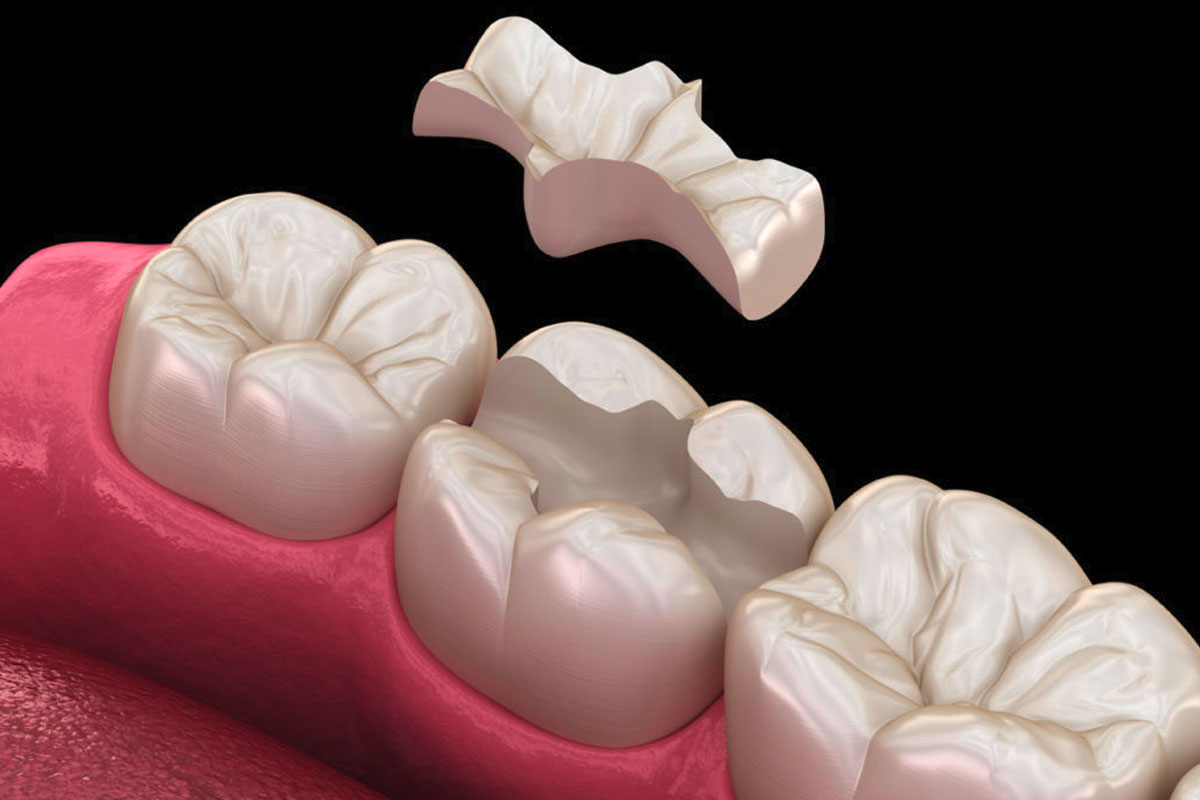A dazzling smile can make a lasting impression, and for many people, the appearance of their teeth is a significant factor in confidence and self-esteem. Dental restorations such as inlays and onlays have emerged as popular options for enhancing dental aesthetics, offering both beauty and a range of benefits.
What are Inlays and Onlays?
Inlays and onlays are precision-crafted restorations made from durable materials like porcelain or composite resin, tailored to fit precisely into or onto a damaged tooth due to decay or fractures. Unlike regular fillings, they are created in a dental lab for a precise fit and natural appearance. Inlays are suitable for limited damage to cusps, offering extra strength and protection, while onlays cover cusps and wrap around tooth sides, providing robust structural support. Both seamlessly blend with neighbouring teeth, matching colour, shape, and size for an aesthetically pleasing smile.
The Benefits of Inlays and Onlays
Inlays and onlays offer numerous benefits for improving dental aesthetics. They provide strength and durability to the affected tooth, strengthening it over time through bonding and reducing the risk of further damage. These restorations are long-lasting due to their precision fit, minimizing the chances of leakage or recurring decay. In addition, they adopt a conservative approach, preserving healthy tooth structure, which can prevent the need for more invasive treatments. Lastly, inlays and onlays enhance dental aesthetics, blending seamlessly with adjacent teeth for a natural and beautiful smile, unlike conspicuous metal fillings.
The Process of Getting Inlays and Onlays
- Dental Examination: The process starts with a dental examination by your dentist. They will assess your tooth’s condition and determine whether inlays or onlays are the right treatment for you. This examination may include X-rays to get a clear view of the tooth.
- Tooth Preparation: If inlays or onlays are deemed appropriate, your dentist will prepare the damaged or decayed tooth. They will remove any decayed or damaged areas and shape the tooth to accommodate the restoration. In some cases, this may require local anaesthesia to ensure your comfort.
- Impressions: After tooth preparation, your dentist will take impressions (molds) of your tooth and the surrounding area. These impressions are sent to a dental laboratory, where skilled technicians will use them to create custom-made inlays or onlays.
- Temporary Restoration: While your permanent inlay or onlay is being crafted in the dental lab, your dentist may place a temporary restoration over your prepared tooth. This temporary restoration protects the tooth and maintains its function and appearance until the permanent one is ready.
- Fabrication: In the dental laboratory, technicians will use the impressions to craft your custom inlay or onlay. They select materials like porcelain or composite resin to match your natural teeth in colour and appearance.
- Placement: Once your permanent inlay or onlay is ready, you’ll return to the dentist for its placement. They will remove the temporary restoration and check the fit and appearance of the permanent one. If everything looks good, the inlay or onlay will be bonded to your tooth using a strong dental adhesive. The dentist will ensure that the restoration aligns correctly and make any necessary adjustments for a comfortable bite.
- Final Checks: After placement, your dentist may schedule a follow-up appointment to ensure the restoration is functioning properly and that you are comfortable.
Caring for Inlays and Onlays
To keep your inlays and onlays in good shape and your mouth healthy, follow these steps:
- Brush Well: Brush your teeth gently but thoroughly twice a day with a soft-bristled toothbrush and fluoride toothpaste. Don’t forget to clean the areas with inlays or onlays.
- Floss Daily: Use dental floss daily to get rid of food bits and plaque between your teeth and around the restorations. Be gentle around these areas.
- See Your Dentist: Visit your dentist regularly, usually every six months or as advised. They can check on your inlays or onlays and catch any problems early.
- Get Cleanings: Professional dental cleanings are important. Dental experts can clean spots that are tough to reach, ensuring your restorations stay in good shape.
- Be Careful: Avoid habits like chewing on hard things (like ice) and using your teeth as tools (to open bottles, for example), as these can harm your inlays or onlays.
- Watch What You Eat: Be mindful of your diet, cutting back on sugary and acidic foods and drinks that can hurt your teeth and restorations. Drink water to rinse away food and acids.
- Nightguard (if needed): If you grind or clench your teeth at night, your dentist might suggest a nightguard. It protects your inlays or onlays from nighttime pressure.
- Act Fast on Issues: If you feel pain, sensitivity, or notice damage to your inlays or onlays, contact your dentist right away. Quick action can prevent more damage and make your restorations last longer.
By following these steps and keeping your mouth clean and healthy, you can ensure your inlays and onlays stay in great condition.
Richmond Dental Centre Accepting New Patients
Are you looking for a local dentist in the city of Richmond? The Dental Professionals at Richmond Dental Centre welcomes walk-ins, emergencies & new patients! Give us a call at (604) 273-3368 to schedule a dental appointment.







